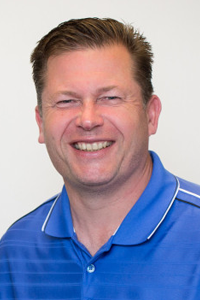 The 9th class of Responsible Nutrient Management Practitioners includes (l-r, starting from 2nd to left) Mike Werling, Decatur, Ind.; Jason Carter, Eastover, S.C.; and Mike Taylor, Helena, Ark. Also pictured are (left) Rob Marquardt, AgroLiquid; (second from right) Rick Knifley, AgroLiquid; and Darrell Bruggink, No-Till Farmer.
The 9th class of Responsible Nutrient Management Practitioners includes (l-r, starting from 2nd to left) Mike Werling, Decatur, Ind.; Jason Carter, Eastover, S.C.; and Mike Taylor, Helena, Ark. Also pictured are (left) Rob Marquardt, AgroLiquid; (second from right) Rick Knifley, AgroLiquid; and Darrell Bruggink, No-Till Farmer.
ST. LOUIS (Jan. 18, 2017) — Several growers have been honored for their efficient and effective use of applied fertilizer in their no-till systems. Considered Responsible Nutrient Management Practitioners, the no-tillers were honored January 11 before 900 growers during the 25th annual National No-Tillage Conference.
Jason Carter, Eastover, S.C.; Mike Taylor, Helena, Ark.; and Mike Werling of Decatur, Ind., each shared five practices they utilize on their farms in an effort to use only necessary amounts of applied fertilizer and ensure it’s used by crops rather than lost to the environment.
Last year, all nominees for the 9th annual program answered more than 20 questions about their farming operations through an online application. Their responses were graded by a panel of fertility experts. The highest scorers were awarded the honor, along with complimentary travel to the conference and lodging from AgroLiquid and conference registration from No-Till Farmer. AgroLiquid and No-Till Farmer are co-sponsors of the Responsible Nutrient Management Practitioners Program.
Following are snapshots of fertility practices utilized by these no-tillers:
- Carter no-tills corn and soybeans in the Coastal Plains soils of central South Carolina, where he has raised soil organic matter levels by 50% with a goal to increase them to 3% from 1.5%. He has used cover crop species like cereal rye, crimson clover, hairy vetch and radishes, along with poultry litter, to build up soil organic matter and to both scavenge nutrients within the soil profile and provide nutrients to crops. He has improved timeliness with fertility through sidedressing of liquid fertilizer to corn that’s knee-high and adding fertigation in fields that are irrigated.
- Taylor uses a diverse cropping rotation of soybeans, winter wheat, soybeans, peanuts, grain sorghum and soybeans on 5,000 acres. With varying soil conditions ranging from Class A cotton soil to silty clay – often within the same row – Taylor has adopted variable-rate technology to apply phosphorus (P) and potassium (K) through soil test levels. He relies extensively on banded liquid fertilizer when planting, whether it’s nitrogen (N), P, K or micronutrients, while spoon-feeding crops with sidedress applications of liquid fertilizer. He has used up to 13 species of cover crops, and found that he’s been able to reduce levels of applied fertilizer.
- Werling’s efforts to be more efficient with fertilizer have allowed him to raise 185-bushel corn with just 100 pounds of applied N. He has even raised 166-bushel corn on just 50 pounds of N. Most of his fertilizer for corn and soybeans is applied at-plant with a planter equipped with two liquid fertilizer systems. He applies N, P and K at planting time, adding that he needs some N at-plant until his cover crops release nutrients later in the season. He soil tests every 3 years to determine the need for micronutrients, lime, gypsum and P and K. He is also experimenting with a Salford machine that can apply both fertilizer and cover crop seed into the soil to reduce the potential for P loss into waterways.
“These three farmers have taken a serious approach to how they manage nutrients,” says Troy Bancroft, President and CEO of AgroLiquid. “They are continuously looking at ways to be more effective with their applied fertilizer so they can get the best return for their dollar, but also make sure that crops are utilizing these nutrients and losses to the environment are vastly reduced or eliminated altogether. They are a great example for all farmers to follow.”
To get more details about these farmers’ fertility management programs and farming operations, visit the Responsible Nutrient Management Practitioners page on the No-Till Farmer website at www.No-TillFarmer.com/topics/439.
Nominations for the 10th class of Responsible Nutrient Management Practitioners will be announced shortly. Winners will be awarded at the 26th annual National No-Tillage Conference in Louisville, Ky., from Jan. 9-12, 2018. Contact Darrell Bruggink of No-Till Farmer at dbruggink@lessitermedia.com for more information on the program.







